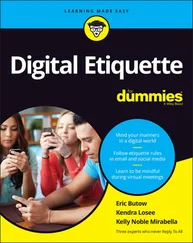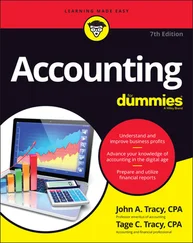Kenneth W. Boyd - Cost Accounting For Dummies
Здесь есть возможность читать онлайн «Kenneth W. Boyd - Cost Accounting For Dummies» — ознакомительный отрывок электронной книги совершенно бесплатно, а после прочтения отрывка купить полную версию. В некоторых случаях можно слушать аудио, скачать через торрент в формате fb2 и присутствует краткое содержание. Жанр: unrecognised, на английском языке. Описание произведения, (предисловие) а так же отзывы посетителей доступны на портале библиотеки ЛибКат.
- Название:Cost Accounting For Dummies
- Автор:
- Жанр:
- Год:неизвестен
- ISBN:нет данных
- Рейтинг книги:4 / 5. Голосов: 1
-
Избранное:Добавить в избранное
- Отзывы:
-
Ваша оценка:
- 80
- 1
- 2
- 3
- 4
- 5
Cost Accounting For Dummies: краткое содержание, описание и аннотация
Предлагаем к чтению аннотацию, описание, краткое содержание или предисловие (зависит от того, что написал сам автор книги «Cost Accounting For Dummies»). Если вы не нашли необходимую информацию о книге — напишите в комментариях, мы постараемся отыскать её.
Cost Accounting For Dummies
Cost Accounting For Dummies
Cost Accounting For Dummies — читать онлайн ознакомительный отрывок
Ниже представлен текст книги, разбитый по страницам. Система сохранения места последней прочитанной страницы, позволяет с удобством читать онлайн бесплатно книгу «Cost Accounting For Dummies», без необходимости каждый раз заново искать на чём Вы остановились. Поставьте закладку, и сможете в любой момент перейти на страницу, на которой закончили чтение.
Интервал:
Закладка:
Increasingly, riders tell you that they can’t find a waterproof jacket that holds up to heavy use. Most jackets don’t repel water well, leaving riders in a cold wet jacket (sometimes far from home). Zippers tend to jam with frequent use, particularly in rainy weather. Riding in a light rain can be manageable, if you have the right jacket.
The next step is to design the product, complete a small production run, and have customers try the jacket.
Designing the new product
Your Thunder Proof jacket is designed with multi-layered, lightweight material. The zippers are high quality, and the zipper pockets are reinforced to hold up during frequent use.
Fortunately, you have reliable suppliers, and you determine that the total material cost is $65 per jacket. The machinery you use for other products can be configured to produce jackets, and labor costs add up to $30 per jacket.
Now, that’s not all. You also allocate indirect (overhead) costs to the jackets for the factory lease, utilities, and for office costs. Time to get out the calculator: Overhead costs total $12, for a total product cost of $107.
Estimating sales
If you go back to basics, sales equals units sold, multiplied by the sale price. To estimate the price, talk to the customer who used the jacket.
Did the jacket solve the problem? If so, would you be willing to pay $125 for the jacket? What if the price was $140? These questions connect the price paid to the value received. You talk to customers, research prices on other jackets, and decide on a $130 price.
Last step! Estimate the number of units sold in year one. Market research indicates that 500,000 riders average a 30-mile ride each week, and these are the serious riders that need your jacket. If two percent of that group buy a jacket in year one, that’s 10,000 jackets sold and $1.3 million in sales.
Using CVP tools
To bring the new product discussion in for a landing, I’ll use some of the cost accounting tools discussed earlier in the chapter.
Here’s a review of the Thunder Proof jacket forecast for year one:
Material costs total $65 per jacket, and you’ll spend $30 per jacket on labor costs.
Overhead costs add up to $12 per jacket.
The sale price is $130 per unit, and you expect to sell 10,000 jackets in year one.
In order to use some of the formulas explained in this chapter, you need to analyze the costs differently. It’s not unusual for a business owner to start by defining costs per unit, but changing the analysis is more useful.
Rather than working with costs per jacket, you need to assign costs as either fixed or variable. Head over to Chapter 2to learn about the differences between fixed costs, variable costs, direct costs, and indirect (overhead) costs.
You dig into cost information, assign costs, and plug the results into the breakeven formula:
Profit ($0) = sales – variable costs – fixed costs
Profit ($0) = (units × $130) – (units × $85) – $300,000
Solve for the number of units:
$300,000 = units × $45
$300,000 / $45 = units
6,667 = units
You need to sell 6,667 units, in order to cover all your costs and breakeven. Fortunately, your market research estimates 10,000 jackets sold in year one, which is above breakeven. Use the breakeven formula, and solve for profit:
Profit = $130 × (10,000) – $85 × (10,000) – $300,000
Profit = $1,300,000 – $850,000 – $300,000
Profit = $150,000
If you hit your sales goal of 10,000 jackets, you’ll earn $150,000 profit in year one. You can use this analysis for any new product idea, and decide if the required investment will generate a reasonable profit.
The Tax Man Cometh, the Profits Goeth
Do you consider taxes when you make a spending decision? Does a bear live in the woods? The answer is “yes” to both questions. If you’re considering a major purchase, think about the income you need to earn and the tax bite. There’s going to be an impact on your profit. CVP analysis can help you figure everything out.
Understanding pre-tax dollars
Assume the business needs a car. The cost is $5,000. You have to earn more than $5,000, pay tax on that amount (say 30 percent), and then pay for the car. How much do you have to earn? Here’s a formula to compute how much you need to earn, which I refer to as pre-tax dollars:
Pre-tax dollars needed for purchase = cost of item ÷ (1 - tax rate)
Pre-tax dollars needed for purchase = $5,000 ÷ (1 - 0.30)
Pre-tax dollars needed for purchase = $5,000 ÷ 0.70
Pre-tax dollars needed for purchase = $7,142.86
The cost of the car in pre-tax dollars is $7,142.86.
When you allow for taxes, it takes $1.43 to buy $1.00 worth of car. $7,142.86 ÷ $5,000 equals 143% (with rounding). To purchase the car, you need 143% of $5,000, or $7,142.86. The taxes paid in this example are $2,142.86, the difference between $7,142.68 and $5,000.
Adjusting target net income for income taxes
It’s a smart move to assess the impact of taxes on target net income. Assume your business, Pizza Gone Wild, earns a $100,000 profit. That profit doesn’t account for income taxes. It assumes that as the owner, you keep $100,000 in your pocket with no taxes paid. Assume a 30 percent tax rate. You can calculate the pre-tax dollars needed to earn $100,000 after taxes:
Pre-tax dollars = cost of item ÷ (1 - tax rate)
Pre-tax dollars = $100,000 ÷ (1 - 0.30)
Pre-tax dollars = $100,000 ÷ 0.70)
Pre-tax dollars = $142,857.14
The taxes paid are $42,857.14. And you’re probably saying, “Oh, I get it. To earn $100,000 after tax, I need to increase my sales to cover the taxes.” And you’re right. Ideally, sales prices and volume are sufficient to cover the burden of taxes.
Consider an example, using Pizza Gone Wild. The plan for profitability was to sell 10,000 units at $20 each, but that won’t pay the taxes. Calculate the number of units you need to sell to cover profits and taxes ($142,857.14):
$142,857.14 = (units × $20) – (units × $8) – $20,000
$142,857.14 = units × ($20 – $8) – $20,000
$142,857.14 = units × $12 – $20,000
To finish the calculation, add $20,000 to both sides of the equation. Then divide both sides by $12.
You need to sell 13,571 units to handle the $142,857.14. That’s 10,000 units for your profit and 3,571 units to handle the taxes. You gotta sell a lotta dough to make a little dough.
Chapter 4
Estimating Costs with Job Costing
IN THIS CHAPTER
 Deciding when to use job costing and process costing
Deciding when to use job costing and process costing
 Identifying cost objects
Identifying cost objects
 Using job costs to price a product or service
Using job costs to price a product or service
 Learning to use a normal costing system
Learning to use a normal costing system
 Applying indirect cost to the budgeting process
Applying indirect cost to the budgeting process
J ob costing is a costing methodology you use when your customers incur unique amounts of costs. Job costing assesses costs by the job and allows you to provide detailed price estimates based on the product constructed or service provided.
Читать дальшеИнтервал:
Закладка:
Похожие книги на «Cost Accounting For Dummies»
Представляем Вашему вниманию похожие книги на «Cost Accounting For Dummies» списком для выбора. Мы отобрали схожую по названию и смыслу литературу в надежде предоставить читателям больше вариантов отыскать новые, интересные, ещё непрочитанные произведения.
Обсуждение, отзывы о книге «Cost Accounting For Dummies» и просто собственные мнения читателей. Оставьте ваши комментарии, напишите, что Вы думаете о произведении, его смысле или главных героях. Укажите что конкретно понравилось, а что нет, и почему Вы так считаете.












